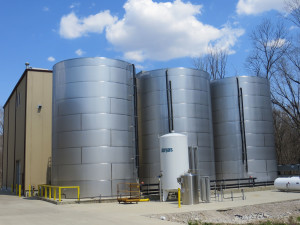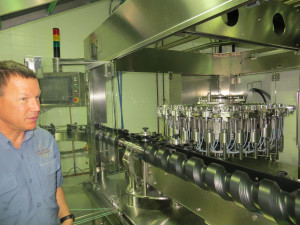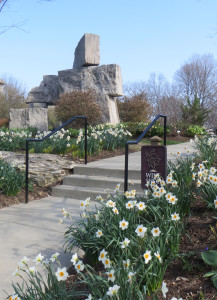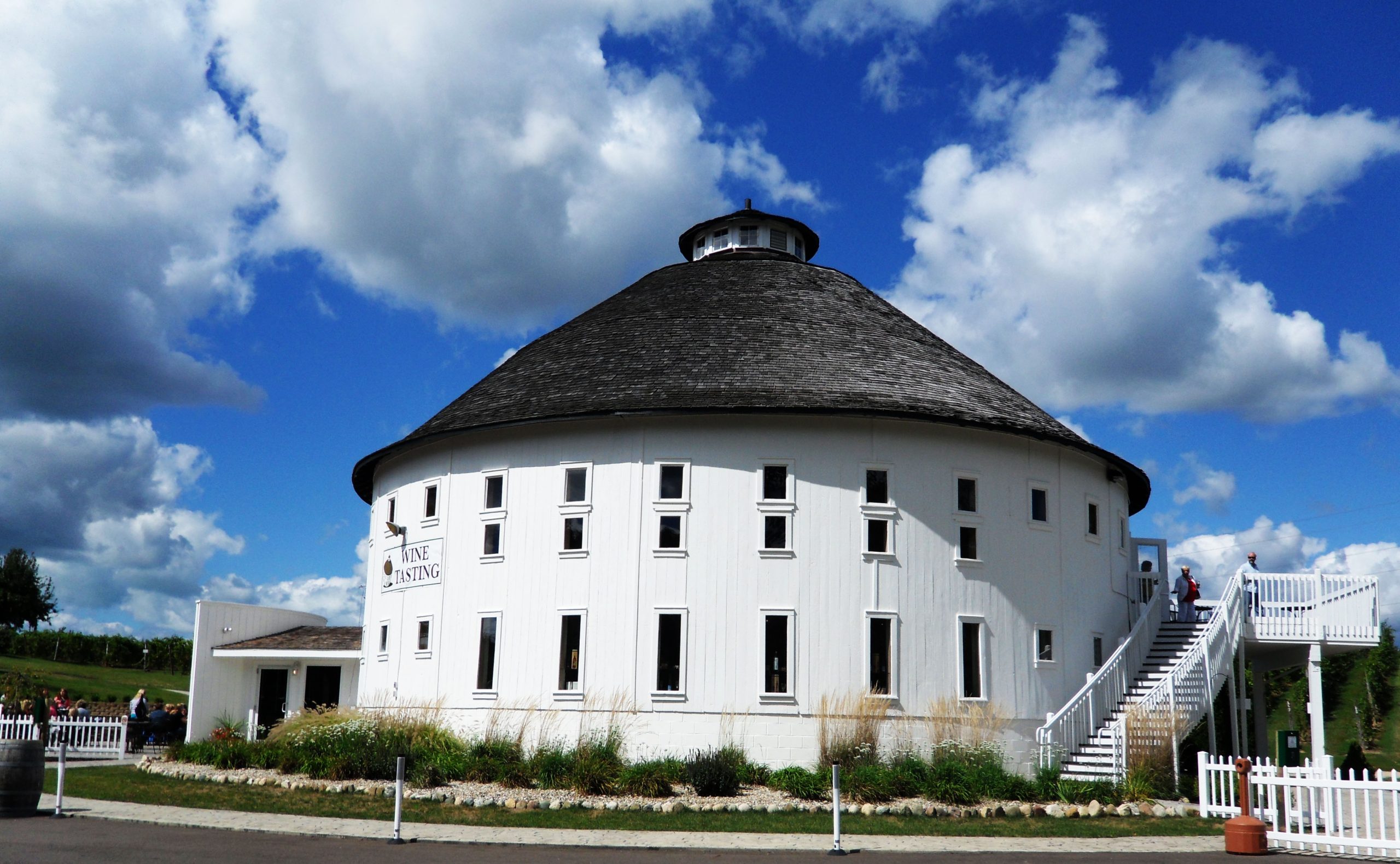New Frontiers for Midwest’s Biggest Winery
Next to Oliver Winery’s Creekbend Vineyard is a small graveyard where the original 19th century homesteaders were laid to rest. These pioneers came to Indiana when it was a virtual wilderness. Sometimes I wonder if those of us living today would be able to handle the rigors Midwestern pilgrims faced.
It’s hard to imagine our generation building houses and clearing fields with crude tools and our bare hands. Yet in the frontiers of the Midwestern wine industry, you meet people who would have relished the life of a North American pioneer.
One such person is Bill Oliver, the owner of Oliver Winery in Bloomington, Indiana. During 1983, he took over a winery from his father that was known mainly for making mead. He proceeded to transform it into the largest winery in the Midwest, and perhaps the largest winery in a state not bordered by the Pacific Ocean.
Recently, I spent the morning with Bill during a constant motion “interview” that traversed Oliver’s sprawling winery complex and the Creekbend Vineyard. Standing on the steps of a refurbished pioneer home adjacent to the vineyard, Oliver explained the plan he laid out for the winery over 20 years ago.
‘Me and Bernie (vineyard manager Bernie Parker) stood on this porch when this was just a ragged old farm and thought ‘someday this will all be our vineyard,'” Oliver said.
True to his vision, Oliver expanded and replanted the vineyard in 1994. What was once marginal farmland is now a 60 acre mix of hybrids and vinifera grapes. It’s also one of the most eclectic vineyards you will ever see.
One portion of the vineyard is devoted to vinifera varietals like Cab Sauv and Pinot Grigio. It’s mid-April, and these old world vines have just been uncovered and placed back on their trellises after a severe winter.
The low temperature in the vineyard this winter was-16F, which is cold for Southern Indiana, but not unprecedented. “We don’t expect a vinifera crop every year,” Oliver explained.
Losing the vinifera crop is not decimating for Oliver because most of the estate grown wines at Oliver are made from hybrid and labrusca grapes. The first hybrid planted was Chardonel, which is now used mainly for blending. Oliver now grows many types of hybrid grapes, including Valvin Muscat and Traminette. Bill still loves to experiment with new hybrid cultivars.
For example, Oliver is one of a handful of Midwest wineries that has planted Crimson Cab, a cross between Cab Sauv and Norton. Oliver notes that the Crimson Cab that’s grafted on Corot Noir roots, is growing more vigorously than the three-year old Crimson Cab that grows on its own roots.
Some of the estate grown Corot Noir, a Seyve Villard/Steuben cross developed by Cornell, is blended with 48% Marechal Foch to make a wine simply titled “Noir.” This hybrid wine has many aristocratic qualities including soft tannins and sweet black cherry flavors.
Oliver is clearly excited about the start of the growing season as he briskly walks the length of the undulating vineyard on a radiant spring day. He is equally excited about a new line of wines- The Vine Series- which are made with West Coast grapes.
Over the years, Bill has established relationships with grape growers that extends from the temperate Yakima Valley of Washington all the way down to scorching Paso Robles, California. He seems as comfortable talking about the microclimates of California as the contours of his own vineyards. Regular visits to the West Coast have resulted in Indiana wine made from Zinfandel (Lodi), Gewurztraminer (Monterrey) Cabernet Sauvignon, (Paso Robles) and Riesling (Columbia Valley, WA.)
As knowledgeable as he is about wine, Oliver is an unabashed proponent of Catawba, a labrusca grapethatis spurned by wine sophisticates. During the 2013 Michigan Wine Conference, Oliver told the audience, ‘When I started Creekbend, my wine buddies said, ‘Why are you planting Catawba, what’s up with that?'”
‘But I really like Catawba,” Oliver said. “I think when it’s ripe it makes a beautiful wine. So we’re going to treat Catawba like a wine grape. We’re going to shoot position and leaf pull, and put it in a French bottle and sell it for $13. I want everyone to find a wine they like here.”
Oliver’s sparkling Catawba is a delicate, exquisitely Midwestern wine. Drinking a glass made me feel like a gilded age gentleman in a Pullman car on the old Wabash Cannonball. (In the days of steam trains, Catawba was probably the most popular wine in America.)

Oliver Winery does not release exact production figures, but based on tank capacity, the winery is probably producing over 800,000 gallons per year.
Back at the winery, Oliver keeps speaking in terms of possibilities and what could be done to make the winery better. ‘I’d really like to move the tasting room building so the center of gravity is more inward,” Oliver says, as if he is trying to find some Zen like point where the operation hums with harmonic convergence.
As we walk through the production area, one can’t help but notice that all the employees make direct eye contact and smile as they walk past. It’s as if everyone is connected by some invisible force.
This summer, Oliver is planning a “bike trip” from Key West to Bloomington with his two teen aged sons. The total distance is over 1,300 miles. “The trip is not going to be easy for me or them,” Oliver said. “But when you look back on your life, it’s the challenges and adventures that you remember.”






Thanks Mark for another nice article.
Oliver Winery has been instrumental in illustrating that high quality, world class wine can be GROWN in this state. I will also note that the professionalism that Bill, and his wife, Kathleen bring to our industry, has cultivated an environment for many wineries to develop and prosper.
Thanks Bill to you and your team.